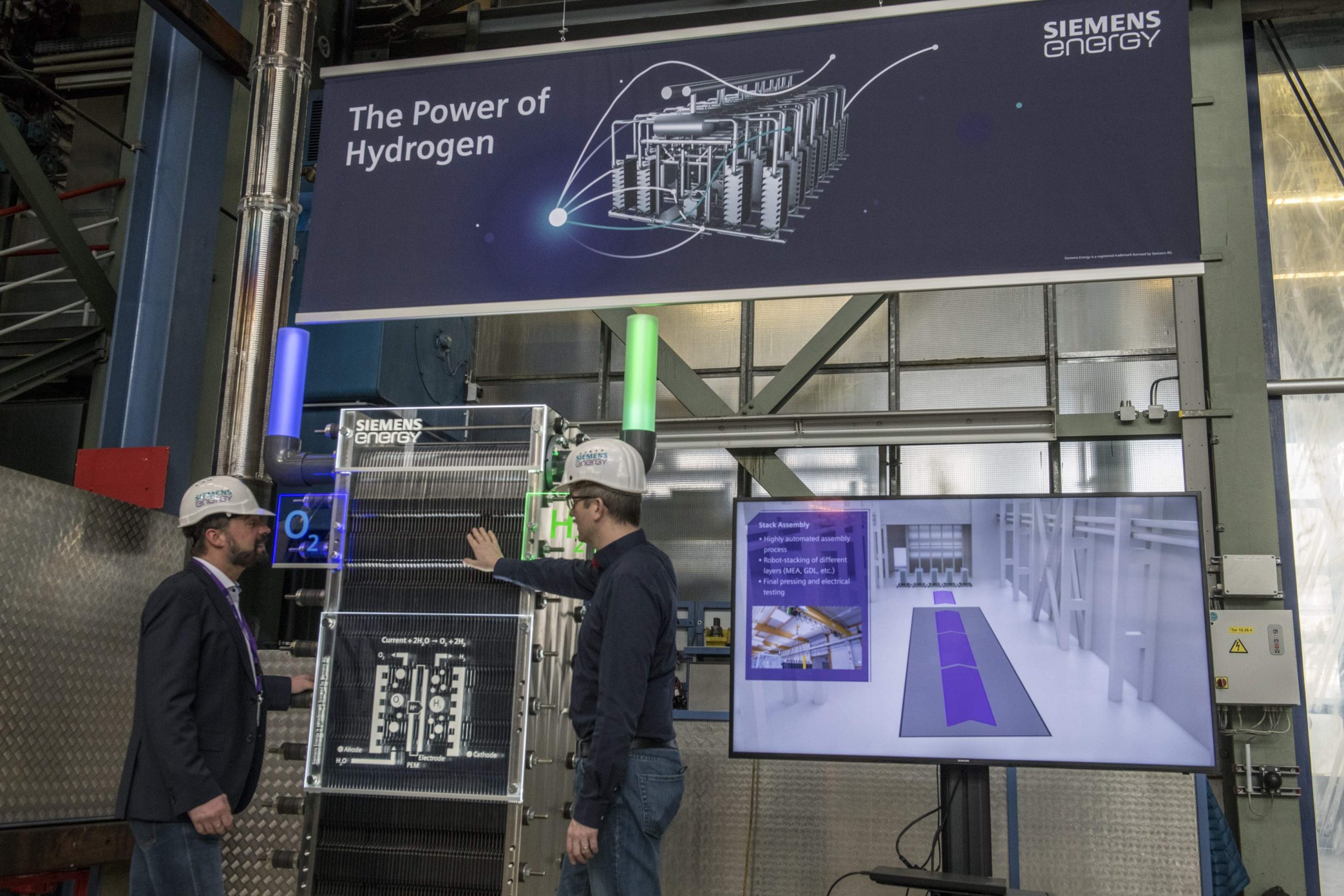Vice President Thoughts: Siemens Energy Will Enable The Energy Transition

To balance intermittent renewables and increase the usage of green energy, Siemens Energy and SSE are set to develop plans to integrate hydrogen production, storage, and power generation technologies at a project in the Humber region.
The Aldbrough Hydrogen Pathfinder project will support the evidence base for the wider deployment of flexible hydrogen power in the UK’s net zero journey and aims to produce hydrogen and start filling the cavern by 2025, subject to planning consents and reaching a financial investment decision next year.
Located at SSE Thermal and Equinor’s existing Aldbrough Gas Storage site on the East Yorkshire coast, the project is designed to demonstrate the interactions between hydrogen electrolysis, hydrogen cavern storage and 100 per cent hydrogen dispatchable power.
Siemens Energy Is Showing How Technology Can Support Net Zero Transition
It could see green power sourced from the grid through Renewable PPAs, in compliance with the Low Carbon Hydrogen Standard. Hydrogen would then be produced via a 35MW electrolyser before being stored in a converted salt cavern and then used in a 100 per cent hydrogen-fired turbine, exporting flexible green power back to the grid at times of system need.

Steve Scrimshaw, Vice President at Siemens Energy Limited UK & Ireland
Hydrogen Industry Leaders spoke to Steve Scrimshaw, Vice President at Siemens Energy Limited UK & Ireland, about the Aldbrough Hydrogen Pathfinder project and its importance.
He said: “As Technology Partner, the project involves Siemens Energy providing an electrolyser, which converts green electricity into hydrogen and oxygen. We will compress the hydrogen into a salt cavern, which is storing gas at the moment, but that would be changed to create and store hydrogen there.”
These caverns at Aldbrough were created more than a decade ago out of a subterranean layer of rock salt and are used to store gas at times of low demand and sell it back at peak demand periods.
The project is seeking support from the UK Government’s Net Zero Hydrogen Fund, which aims to support the commercial deployment of new low-carbon hydrogen production projects during the 2020s.
Steve revealed how necessary funding like this is: “This project has been entered into the Net Zero Hydrogen Fund competition. We’re looking forward to hopefully seeing the government supporting it, and then we can get this underway. I think the more we get forward in doing some of these things, we will create a strong hydrogen economy, which is important for the UK.”
I think this will be a trailblazer to demonstrate that there is a technology that can be used for intermittency.
Pace And Clarity Are Key To Hydrogen Projects Being Delivered
For the UK to deliver on its net zero ambitions, the following year can either pave the way for crucial final investment decisions or result in that capital being used elsewhere. Providing clarity on business models for the infrastructure required to deliver and turn targets into a defined policy is essential.
Steve explained that boosting confidence in the hydrogen economy is crucial: “I think you need to build up momentum behind it. You will find that investors and people have confidence that things are happening because there is a lot of talk in the industry.”
Everybody is just waiting for the hydrogen business models, and building that confidence is essential.
To boost this confidence, projects need to be delivered and to deliver these projects, a quick pace is critical: “We need to get this moving quickly so that we can provide it. Getting this down and working will be a massive challenge, but that is the thing for us as a country.
“At the moment, as a country, we have got a process that we’re going through, and I think we need to move at a quick pace to try and get some industrial projects, not just demonstrated, but deployed at scale.” Steve expressed.
The Project Is A Key Element To Decarbonising The Humber
In the future, Steve revealed that Siemens Energy want to continue to empower its customers to meet the growing global demand for energy while transitioning to a more sustainable world: “We connect the wind farms offshore with big transmission projects, we make grid connections for electrolysers, we make electrolysers, we make gas turbines that produce energy, and a lot of this is in the UK.
“We have got around 4000 people in the UK, multiple factories, and we’re involved in many carbon capture projects in the UK.”
At Siemens Energy, we see ourselves as an enabler for the energy transition.
The Aldbrough Hydrogen Pathfinder project is forming a key element of more comprehensive plans to decarbonise the Humber, which is currently the UK’s most carbon-intensive industrial cluster.
Developing carbon capture usage and storage and low carbon hydrogen technology, shared with regional infrastructure, would help to preserve jobs by enabling energy-intensive industries to continue to operate and thrive whilst decarbonising the UK.
Through this technology and infrastructure, the Humber can become the base for the UK’s first net zero carbon industrial region. Siemens Energy is confident that being across the value chain uniquely positions them as enablers of the energy transition.

